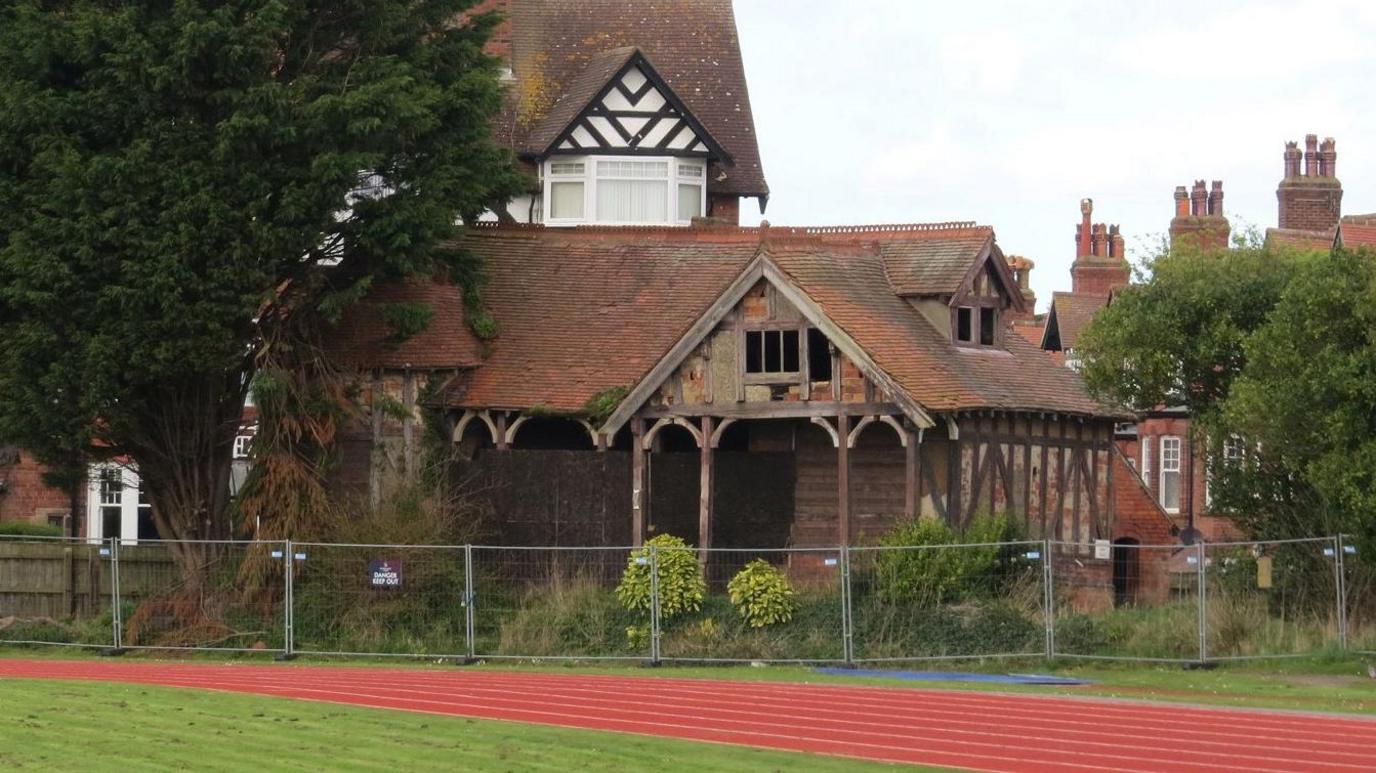Coastal tennis pavilion was once the Wimbledon of the north
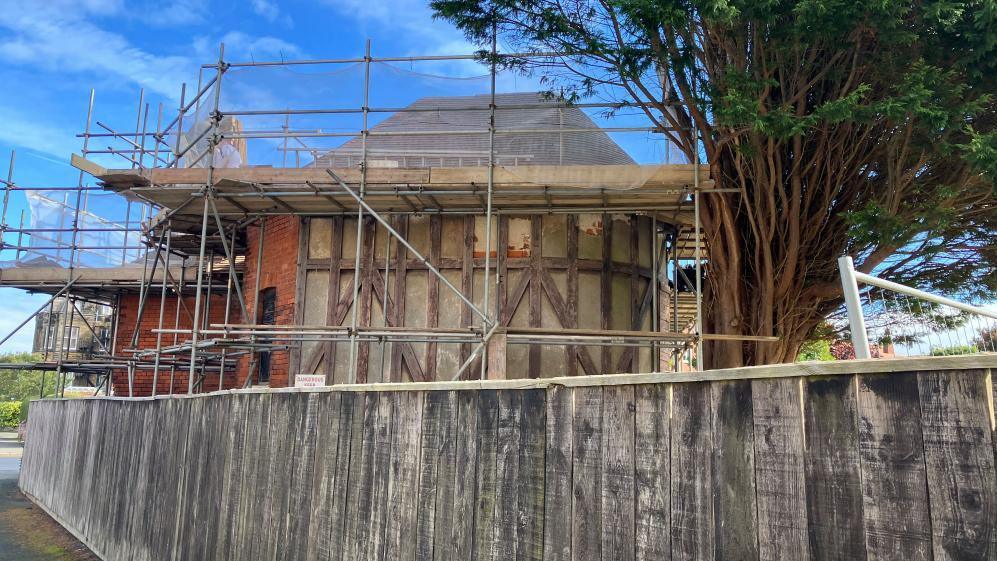
Work has begun on restoring Bramcote Tennis Pavilion in Scarborough
- Published
A residential street by the North Yorkshire coast might seem like an unlikely place to find one of the earliest surviving lawn tennis buildings in the world, which once played host to international tournaments.
Scarborough's 19th Century Bramcote Tennis Pavilion is tucked into the corner of an athletics track, on a quiet stretch of road lined by Victorian houses.
"It was, in its heyday, a very pretty building," says Chris Perry, from Scarborough Civic Society.
"It is described as quite a rare survival, which makes it all the more important to retain."
Today it is surrounded by scaffolding with preservation works reportedly under way, but for many years prior, the building's continued existence was under threat.
A Scarborough resident for 23 years, Ms Perry has been heavily involved in the campaign to save the tennis pavilion, after watching it slowly fall into disrepair.
"There's been quite a list of planning applications that, for one reason or another, haven't led to any action and that's why it's got so neglected," she says.
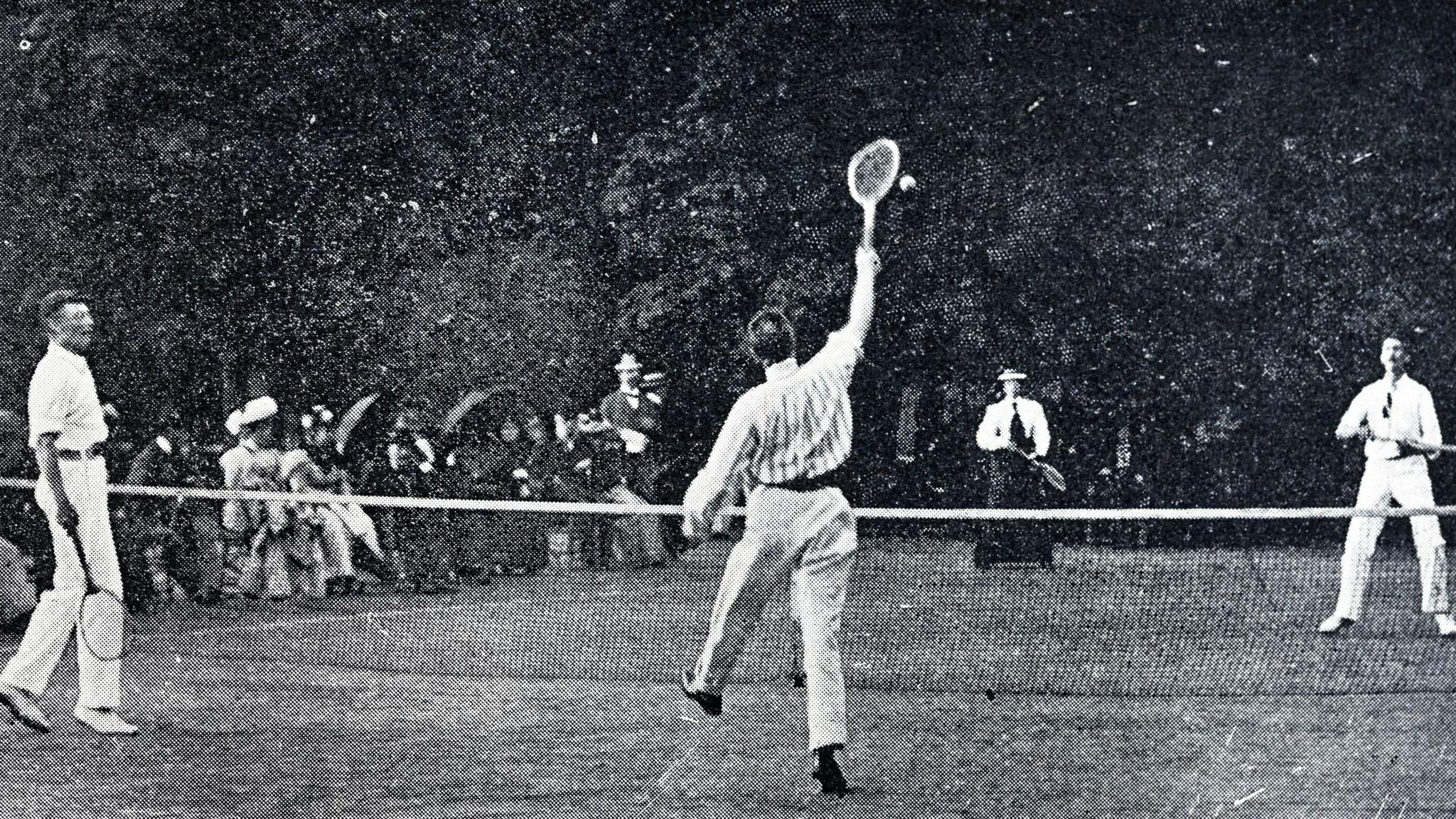
Lawn tennis grew in popularity during the 19th Century
Alongside a campaign by the Victorian Society, the Civic Society helped to get the building listed by Historic England for "special architectural or historic interest".
"The listing raised awareness of the predicament this building was in, and the Victorian Society's interest in it has raised its profile much more - I'm so pleased they can see its potential," Ms Perry says.
"Because so few of these buildings have survived, we will forget what the past was like, and we'll forget the little milestones."
The pavilion was built in 1885 in a "arts and crafts" Tudor revival style by local architect John Hall, for the North of England Lawn Tennis Club.
According to research published by Historic England, it had changing facilities for both men and women, which the organisation said "illustrates a particularly significant social historical aspect of the sport".
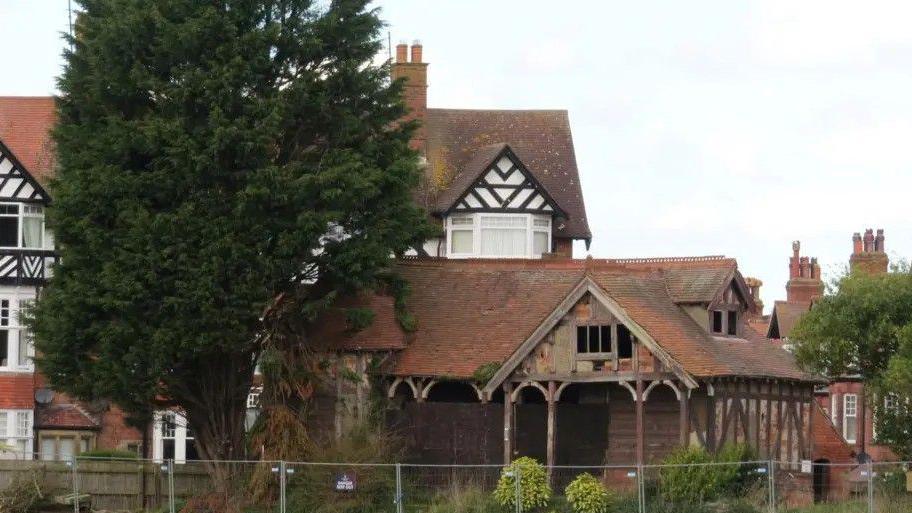
Bramcote Tennis Pavilion in Scarborough was placed on an 'at risk' register last year
Lawn tennis was established in the 19th Century in Edgbaston, Birmingham and quickly grew in popularity in Victorian England.
The first ever Wimbledon was held in 1877, and the expansion of the railway helped facilitate travelling to and from tournaments around the country.
Thomas Ollivier, northern conservation adviser at the Victorian Society described the tournaments hosted at Scarborough as akin to "the Wimbledon of its day".
"It's quite phenomenal little building just be tucked away in what is now quite a quiet part of the world," he said.
Although the North of England Lawn Tennis Club only held nine annual competitions until 1894, Scarborough remained an important hub for tennis.
The pavilion and grounds were leased to Bramcote School, a private preparatory school, in 1901.
In the 1940s, Scarborough hosted The Slazenger Pro Championships, playing host to legendary figure Fred Perry who won titles in 1948, 1950, and 1951, and was a quarterfinalist in 1949.
In 1955 the championships moved from Scarborough to Eastbourne. The final competition took place in 1964. After that tennis in Scarborough went quiet.
In 2012 Bramcote merged with neighbouring private school Scarborough College.
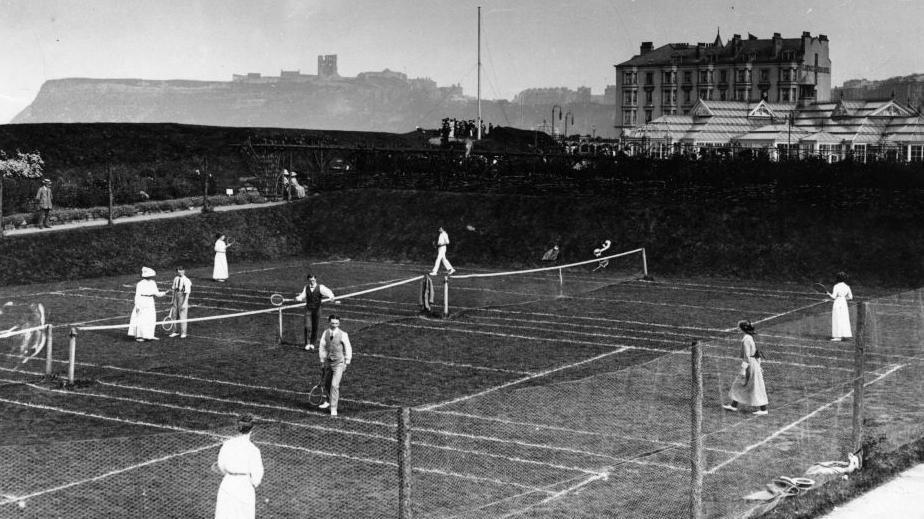
Scarborough had several tennis clubs and courts such as this one near the Floral Hall
Bramcote Tennis Pavilion was first categorised as a Grade II listed building by Historic England in 2017 but it was still left largely untouched.
In 2024, the Victorian Society included it on the Top Ten Endangered Buildings list.
The list is based on public nominations and the buildings selected represent architecture "with unique historical and community significance and value", according to the society.
Alongside Scarborough Civic Society and North Yorkshire Council, the charity lobbied for remedial maintenance works to be carried out.
"We were worried that we were going to lose what is quite an immensely important building in British history, especially in the history of tennis," Mr Ollivier says.
In August this year, the pavilion's current owner confirmed repairs were under way.
Ms Perry says she includes the pavilion on her regular walking route, to check on progress.
At minimum, it would be "fantastic" if the building could "be wind and waterproof", she says.
"I just want it to be used, without too much alteration to what it already is, because that is part of its history."
Mr Olliver says the balance could be struck between representing its "complex history" and helping it serve a future purpose.
"You could still use that building in a sustainable way but maintain that character and significance that many of our buildings have," he says.
"People walk past buildings every day and many of them have amazing stories that nobody will ever know."
Get in touch
Tell us which stories we should cover in Yorkshire
Listen to highlights from North Yorkshire on BBC Sounds, catch up with the latest episode of Look North.
Related topics
Related Internet Links
- Published15 August

- Published2 February
